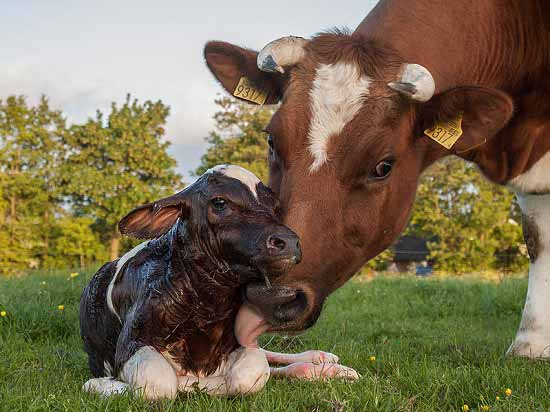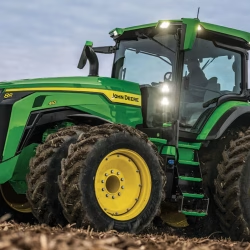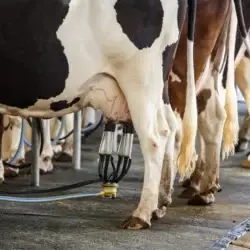Calving difficulty, or dystocia, is a major challenge for cattle producers, resulting in significant financial losses, including increased calf deaths, cow mortality, higher veterinary bills, extra labor costs, and lower conception rates due to delayed return to estrus. A recent study in the USA estimated that calving difficulties cost the industry around $25 million annually. Furthermore, cows that required assistance during previous calvings showed a 16% lower pregnancy rate after the breeding season, highlighting the long-term impact of dystocia on herd productivity.
Thapelo Kgosi Ramokala, also known as King, an animal health specialist at Beefmaster Group, explains that several factors contribute to dystocia. These include the cow’s age, calf birth weight, pelvic area, and the pre-calving nutrition and condition of the dam. He notes, “These factors can generally be divided into two categories: those affecting the size and shape of the calf, and those affecting the dam’s ability to give birth.”
The Role of the Cow’s Age and Calf Birth Weight
Data from Marc and Colorado State University show that the age of the dam plays a significant role in the occurrence of dystocia. “First-time, 2-year-old heifers are more likely to experience calving difficulty, with their risk being three to four times higher than that of 3-year-old cows,” says King. These younger heifers are smaller and less physically mature, making their first calving more difficult.
In addition, birth weight is strongly correlated with the likelihood of dystocia. King explains that an increase in gestation length can lead to an increase in birth weight by 0.2 to 0.4kg per day of gestation. Over the years, selective breeding for higher weaning weights and faster growth rates has resulted in larger birth weights, contributing to higher rates of dystocia.
“Birth weight and calving difficulty have a ‘threshold’ effect,” says King. “Once a calf’s birth weight crosses a certain point, even a slight increase in weight can significantly increase the likelihood of dystocia.” He stresses that selecting beef breeds based on muscle development and growth rates early in life can unintentionally increase birth weight, and consequently, calving difficulty.
The Influence of Pelvic Area and Breed
Pelvic area is another critical factor affecting the incidence of dystocia. Heifers with smaller pelvic areas are more likely to experience calving difficulties. “The incidence of calving difficulty is twice as high in heifers with small pelvic areas compared to those with larger pelvic areas,” King explains. In fact, a pelvic area of at least 160cm² for medium breeds and 180cm² for larger breeds is recommended to reduce dystocia risk.
Producers should also consider the impact of breeding bulls on pelvic size. “For Bos Taurus bulls, pelvic width is important, while for Bos Indicus bulls, pelvic height matters more,” King notes.
Pre-Calving Nutrition and the Condition of the Dam
Many cattle producers believe that reducing energy intake during late pregnancy can result in smaller calves and easier calvings. However, recent research suggests that underfeeding cows can actually increase the risk of calving difficulties, even if birth weight is lower. “Overfeeding cows to the point of obesity increases dystocia, while underfeeding to the point of emaciation can make calving more difficult,” says King.
Excessive protein intake during the final months of gestation can also lead to larger birth weights and calving difficulties. While underfeeding protein should be avoided to prevent “weak calf syndrome,” it’s essential to find a balanced approach to nutrition.
King’s Top 10 Tips for Reducing Calving Difficulty
1. Focus on genetics and management – Genetic solutions take time, but better herd management can have an immediate impact.
2. Monitor birth weight – Keep birth weight in mind when selecting for lower calving difficulties.
3. Ensure adequate heifer weight – Heifers should weigh at least 65% of their mature weight at first breeding and 85% at first calving.
4. Mate heifers to bulls with smaller calves – Select bulls known for siring smaller calves and evaluate estimated birth weight and physical structure.
5. Measure pelvic area – For replacement heifers, aim for a pelvic area of at least 160cm² for medium breeds and 180cm² for larger breeds.
6. Cull cows with a history of dystocia – Avoid retaining daughters from cows with recurrent calving difficulties.
7. Breed heifers earlier – Breed heifers 21-30 days before cows to allow more time for observation during calving.
8. Balance nutrition – Avoid both underfeeding and overfeeding pregnant cows.
9. Be cautious with implants – While zeranol implants can increase pelvic size, they may also lower conception rates and increase the risk of abortions.
10. Understand calf sex – Bull calves have a 5% higher chance of causing calving difficulties than heifer calves.
By implementing these strategies, beef cattle producers can reduce the occurrence of calving difficulties, improve herd productivity, and enhance overall profitability.




